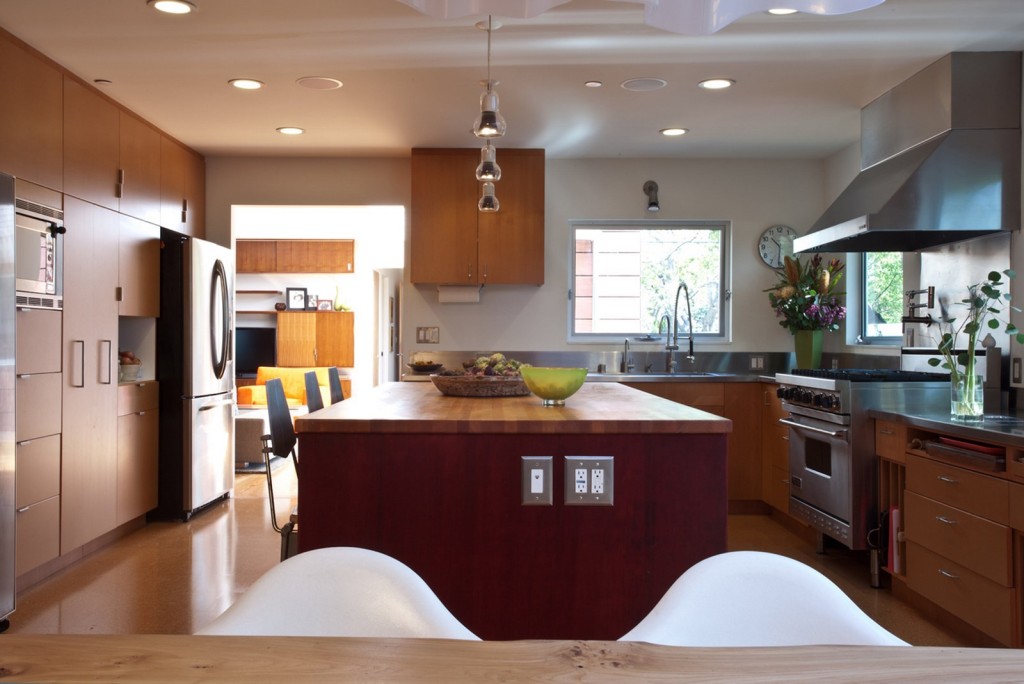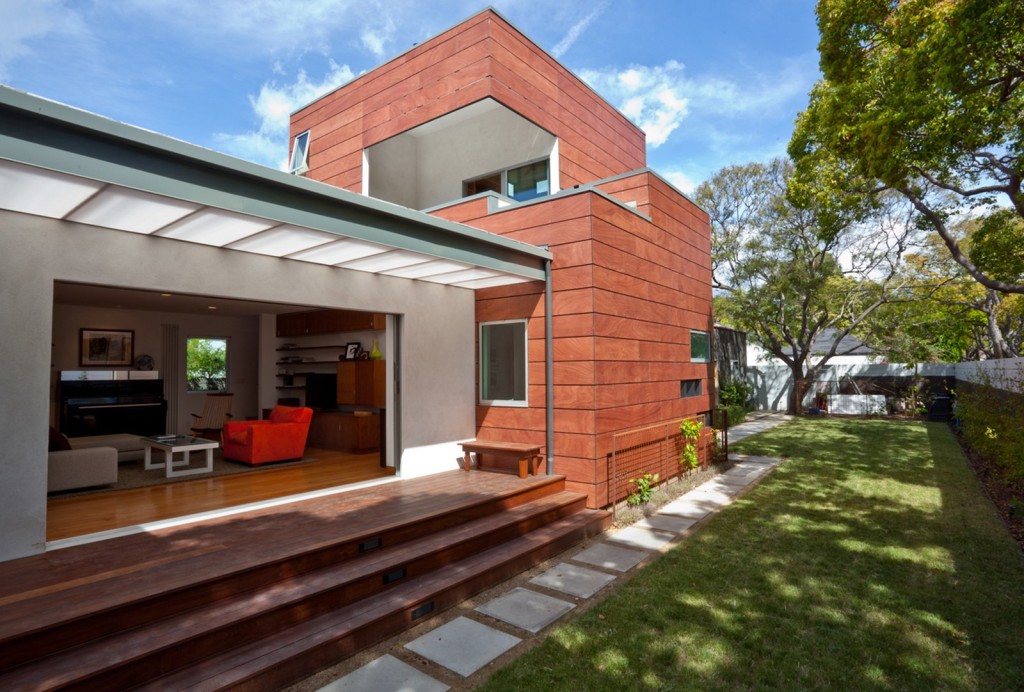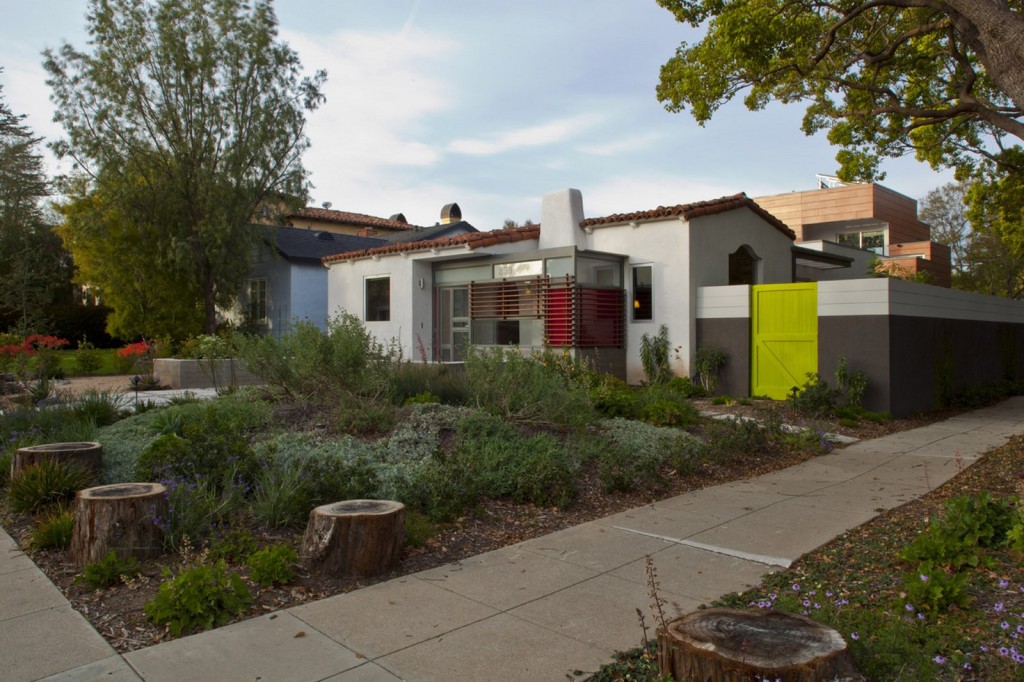The project hinges on the following main ideas: the first was to insert a LEED platinum contemporary renovation into a 1920’s structure in a way that would contrast and complement. Small unused spaces were reconfigured by expanding them for a multiplicity of programs.
Architect: Shimizu + Coggeshall Architects
Location: Santa Monica, California, United States
Project Team: Joshua Coggeshall, Janice Shimizu, Sean Harris, Ryan Klinger, Danny Mascari
Project Area: 2785 sf
Project Year: 2010
Photographs: Joshua White
LEED consultant: Glen Boldt, GB Works
Landscape Architect: Sasha Tarnopolsky, Dry Design
Structural Engineer: Efficient Consulting Engineers
Contractor: deKrassel Construction
Featured Products: Runtal Hydronic Radiator units, Schuco Slim V Solar Collectors, Eco-GFX heat recovery fixture S3-60 by EcoInnovations, National Gypsum, Thermal Core phase changing drywall, TX Active finish coat- photocatalytic smog reducing stucco

25th-Street-Residence-Shimizu-Coggeshall-Architects-02.jpg
Connections with the exterior were set up where every space has a unique relationship to the outside; sometimes framing a view, sometimes blurring the boundary between inside and out.The street elevation scale was preserved while the entry and site were designed to promote neighborhood interaction on a corner in a highly walkable area.

Strategies to reduce demand include improved daylighting, 90% high efficacy lighting, and relocating openings. Additional sustainable issues for this project combined passive and active technologies: radiators fed by a high efficiency boiler, solar water heating, improved existing envelope, greater water efficiency, rainwater harvesting, phase changing drywall, and photovoltaics.

Simultaneously, there was a material agenda that not only contrasted new from old but re-used materials on site: beams became benches and counters became fountains. Salvaged walnut slabs became a counter and framing harvested from a local demolished factory became the living room floor.
The result is a high-performing home that has been completely transformed while respecting the layered history of the house.
Next Post
Eco Cube Proposal | A lab
2 Mins Read





